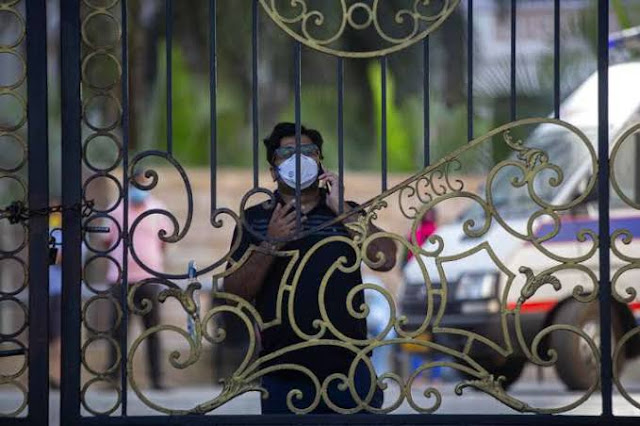Modi also suggested the idea of a lock-in wherein industrial, agricultural and construction workers may be housed within their work zones itself and continue with their
Modi also suggested the idea of a lock-in wherein industrial, agricultural and construction workers may be housed within their work zones itself and continue with their
3 min read . 04:09 PM ISTUtpal Bhaskar
Plan may involve dividing areas into green, orange and red zones
Modi said 'Jaan and Jahaan' both will be taken care of
New Delhi: Hinting at a decentralised strategy ahead, Prime Minister Narendra Modi discussed India’s lockdown playbook with state chief ministers on Saturday that may involve dividing areas into green, orange and red zones.
Modi had earlier made it clear that lockdown cannot be lifted across the country in one go. The number of hotspots, or infection clusters, has swollen to 284 across the country, sparking a containment strategy through strict enforcement of restrictions on movement in these areas.
With the chief ministers of Kerala, West Bengal, Telangana, Uttar Pradesh, Maharashtra, Punjab, Manipur and Delhi and Jammu and Kashmir’s governor making a case for the extension of lockdown, there is a need for a decentralised response given that the spread of the diseases has been varied across the country.
“During the video-conferencing on #coronavirusinindia with state CMs today, most states requested PM @narendramodi to extend the lockdown for 2 more weeks. The Central Government is considering this request," said a union government spokesperson in a tweet.
Speaking to the state CMs through video conferencing, Modi said while people can’t be kept away from work for a long time, life has got priority over economy.
Modi also suggested the idea of a lock-in wherein industrial, agricultural and construction workers may be housed within their work zones itself and continue with their work.
According to officials present at the meeting, Modi said that 'Jaan and Jahaan' both will be taken care of, while stressing upon coordinated efforts to fight the pandemic.
The Centre will shortly come up with the new guidelines for the lockdown.
Modi assured that the raw material for the industry will be taken care of by the government and stated government’s plan to have beds with oxygen facility, apart from ventilators.
Cautioning states about the grave situation ahead, Modi stressed upon the need for online training portal to train para medical and medical staff across all states.
There is a need to ensure that harvest crops does not get affected because of the lockdown for ensuring India’s food security.
Modi said that agriculture is out of lockdown and mandis should not be crowded. He suggested that registered warehouse can be notified as deemed markets as farmers will not have to travel to sell.
Modi also urged the states to encourage people to download the Aarogya Setu app and said it will be helpful in future to issue e-passes. The app helps track coronavirus infections by using the smartphone’s GPS system in determining if one has been near a covid-19 infected person or not.
The states have sought more resources to deal with the health and the socio-economic impact of the coronavirus pandemic and pitched for leveraging Mahatma Gandhi National Rural Employment Guarantee Act (MGNREGA) to counter the same. They have called for increasing the pay and number of work days under MGNREGA.
MGNREGA is a demand-driven social security scheme that provides for 100 days of work per rural household with the number of work-days allowed to be increased to 150 annually in case of drought, flood or a similar calamity.
They have also called for quantitative easing or new money supply by the Reserve Bank of India, increasing the Fiscal Responsibility and Budget Management limit to 6% and deferring the state’ debt service obligations by three to six months.
This comes in the backdrop of India’s economy losing steam over the last few years with growth declining from 8.3% in FY17 to 7% and to 6.1% in the subsequent two years. In FY20 concluded in March, growth was projected to be 5% but analysts and rating agencies have sharply scaled it down with the most optimistic projections hovering around 4%.







Comments
Post a Comment